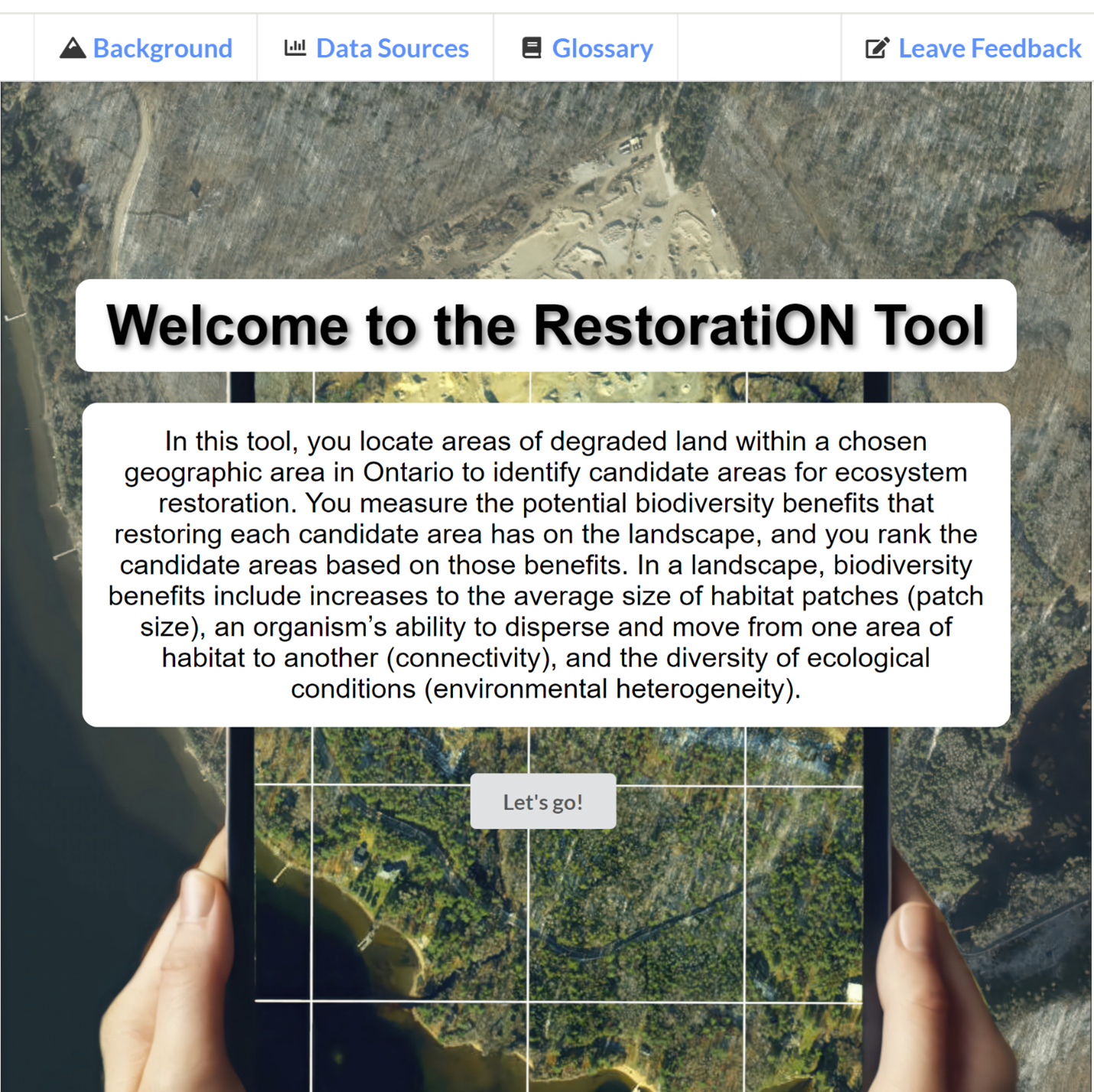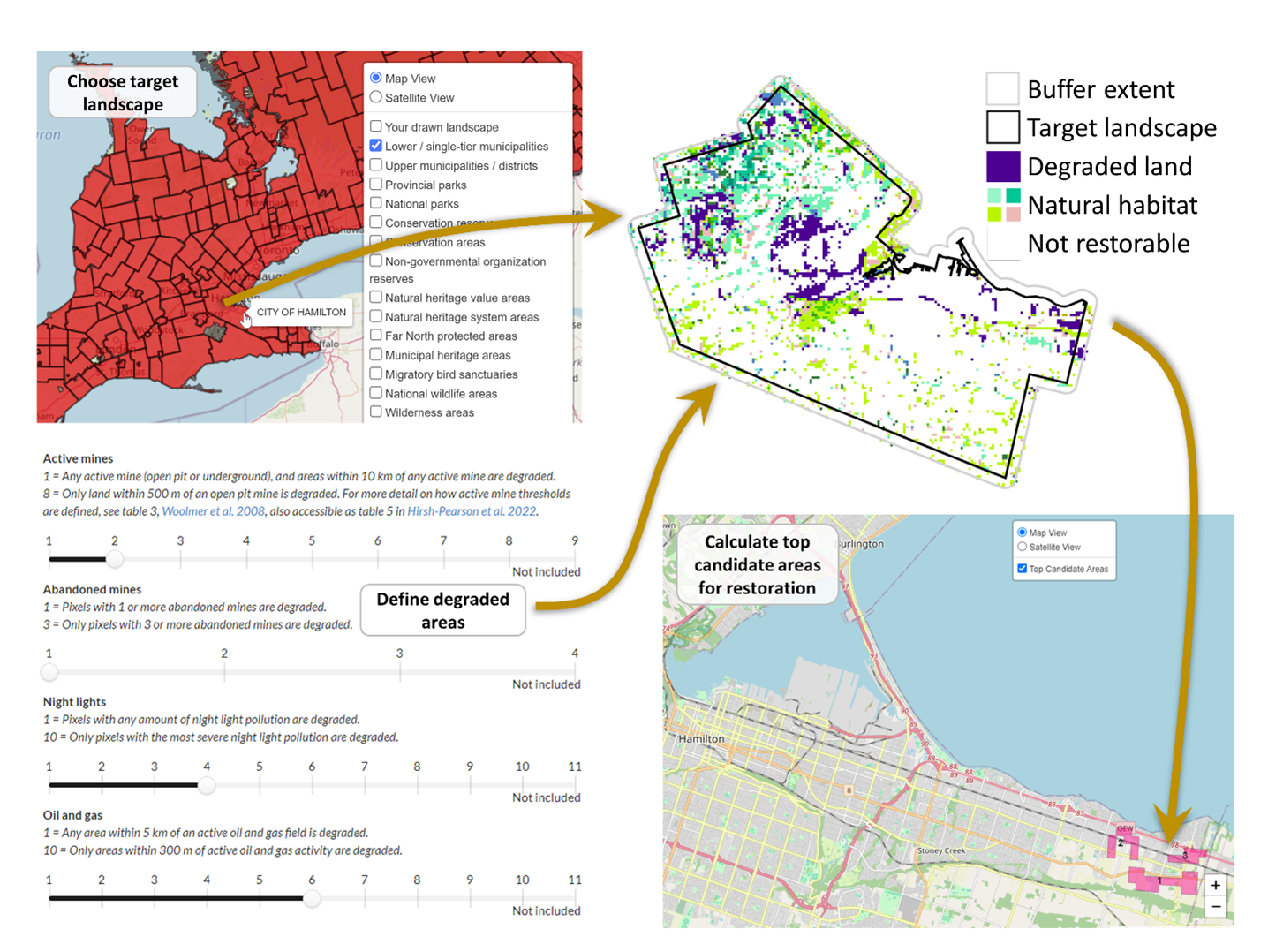Habitat restoration is good… but knowing where to restore can be a challenge! What is needed are practical, Ontario-focused tools to help select the most impactful restoration areas. More so, the tool needs to consider how restoring degraded areas back to natural habitat can prevent or reverse biodiversity loss by expanding and connecting areas where species thrive. Ontario’s Biodiversity Strategy includes a target of identifying priority restoration areas by 2025 – and we’ve developed a tool that will help us achieve that target.
Our online tool, ‘RestoratiON’ (Figure 1), identifies where restoration might have the greatest benefit to biodiversity. The tool is not geared to any one species but instead measures how restoration increases the amount of habitat, the connectivity between habitats, and the diversity of environmental features like soil types and microclimates.
Figure 1. Landing page of the RestoratiON tool.
The tool is flexible, so that it may reflect the diversity of users and restoration challenges that exist in Ontario. The tool is customizable so users can choose the best options for their project including the geographic area to restore, how to define habitat as degraded and restorable, how much degraded habitat to restore, and how to prioritize different metrics indicative of biodiversity benefit. Once the choices are made, the tool ranks areas that, when restored, are likely to yield the greatest biodiversity benefit. The areas are visualized on a map (Figure 2) that can be inspected for restoration feasibility and compared to areas chosen in other geographic areas. Our tool is an interactive application freely available online.
 Figure 2. Overview of some tool features and results including a map showing priority restoration areas in Hamilton, Ontario.
Figure 2. Overview of some tool features and results including a map showing priority restoration areas in Hamilton, Ontario.
For more information about the tool or to try it out, users can access it here: RestoratiON. Documentation is available within the website (links here: background, data sources, and glossary); and step-by-step instructions are available as you progress through the tool. There is also a video tutorial available (accessible version here: described video version).
